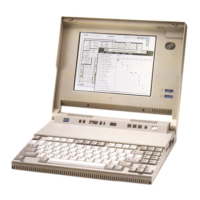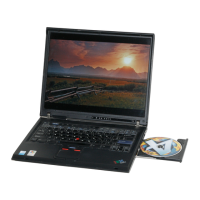– RAM is installed directly onto the system board using industry
standard 30-pin 80 ns SIMMs. There are two banks of four sockets
to allow a maximum of 32 megabytes (MB). 256K, 1MB and 4MB
SIMMs are supported in both banks. Refer to “System Board
Layouts” on page 5-2. Bank 0 or bank 1 must be filled with the
same value SIMMs to work properly. Refer to “System Memory” on
page 1-20.
– 512K Video RAM is soldered on the system board and four sockets
are provided for an additional 512K Video RAM.
– Ports include: two serial, parallel, keyboard, mouse and video.
– Connectors for AT riser card (120-pin), input power (12-pin), AT
diskette drives (34-pin), IDE AT hard disk drives (40-pin), power
LED (2-pin), hard disk LED (2-pin), and video feature (26-pin).
– Lithium battery.
486DX—33MHz processor (socketed) with built-in math coprocessor
(30-pin memory SIMMs)
– Supports 8K internal cache and 128K external cache (not field
upgradeable).
– RAM is installed directly onto the system board using industry
standard 30-pin 80 ns SIMMs. There are two banks of four sockets
to allow a maximum of 32MB. 256K, 1MB, and 4MB SIMMs are
supported in both banks. One or both banks must be filled with the
same value SIMMs to work properly. Refer to “System Memory” on
page 1-20.
– 1MB of Video RAM is soldered on the system board.
– Ports include: two serial, parallel, keyboard, mouse, and video.
– Connectors for AT riser card (120-pin), input power (12-pin), AT
diskette drives (34-pin), IDE AT hard disk drives (40-pin), power
LED (2-pin), hard disk LED (2-pin), and video feature (26-pin).
– Lithium battery.
486SX—25MHz processor (72-pin memory SIMM)
Three system boards available:
1. 2MB SIMM for system memory and no cache sockets
2. 2MB SIMM for system memory and five cache sockets
3. 4MB SIMM for system memory.
Each system board contains:
– Upgrade processor socket.
– Supports 8K internal cache.
– Some models support 0, 128K, or 256K external cache (field
upgradeable).
– Shipped with 0 cache.
1-6

